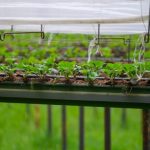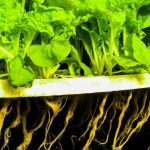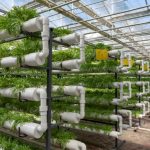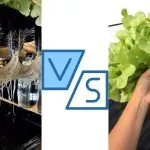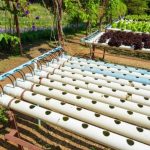Have you ever wondered if there’s a way to grow plants without soil and without constantly monitoring their water and nutrient levels? Well, we have great news for you! Instead of using a traditional hydroponic system, you can try the Kratky method. It’s an incredibly simple and efficient way to grow plants, especially for those who are new to hydroponics.
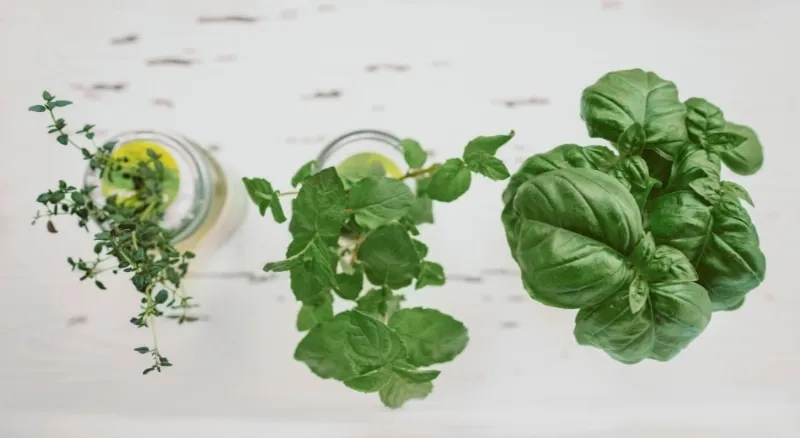
What is the Kratky method of hydroponics? It is a form of passive hydroponics that eliminates the need for electricity, pumps, timers, and other expensive equipment. With just a few simple household items, this method allows plants to access everything they need for growth: oxygen, moisture, light, and nutrients. It’s a game changer for anyone looking to try hydroponics without breaking the bank or investing in complicated setups. We’re excited to share the benefits, principles, and instructions for the Kratky method, so you can start growing your plants with ease.
Origin and Principles
We can trace the Kratky method of hydroponics back to 2009 and Dr. Bernard A. Kratky from the University of Hawaii. He developed this passive hydroponics technique as an efficient way to grow plants without the need for electricity, pumps, or complex equipment.
At its core, the Kratky method employs a reservoir filled with nutrient-rich water, with plants suspended above it in a growing medium. Unlike other hydroponic systems, it doesn’t require the circulation of water and nutrients, making it an excellent choice for those looking to adopt a low-resource technique for growing plants.
There are a few basic principles that we need to keep in mind when working with the Kratky method. It is a passive hydroponic system that relies on the natural ability of plants to absorb water and nutrients from a static water supply and utilizes a simple container filled with nutrient-rich water and a substrate medium.
As the plants grow, they absorb water and consume the nutrients via capillary action and the water level in the container gradually decreases, which creates an air gap at the top of the container. More air enters through an opening in the container, providing oxygen to the root zone, which is essential for plant growth. The Kratky method’s simplicity and low-maintenance requirements make it an affordable and accessible way to grow small plants such as herbs, lettuces, and leafy greens in areas with limited space or resources.
Difference between Kratky and Traditional Hydroponics
Hydroponics without electricity: When it comes to comparing the Kratky method of hydroponics with traditional hydroponics, there are several key differences to consider. Perhaps the most significant distinction is that the Kratky method is a passive hydroponic system that doesn’t require electricity or pumps. It does not need any additional inputs of water or nutrients after the initial application. In contrast, traditional hydroponic systems like Deep Water Culture, NFT, and Ebb and Flow typically rely on active management of water and nutrient levels to support plant growth.
Additionally, the Kratky method is best suited for growing small plants or herbs, whereas traditional hydroponics can support larger crops. Another difference is that the Kratky method allows for growing plants in a variety of containers, such as buckets or jars, while traditional hydroponic systems typically use specialized equipment and materials.
Related: We briefly explain each type of hydroponic system in our guide, Hydroponics 101.
Kratky isn’t the only passive method you can use. Take a look at the equally easy wick system of hydroponics.
How to Set Up Kratky Hydroponics
In this section, we’re going to walk you through the process of setting up a Kratky method DIY hydroponic system. We’ll discuss the necessary components and system configurations to get your plants growing successfully.
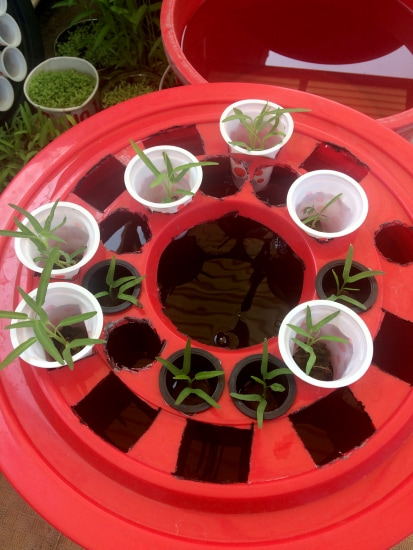
What is the Best Fertilizer for Kratky Method?
For the Kratky method, it is best to use a complete hydroponic nutrient solution that contains all the essential minerals and nutrients that plants need to grow. You can find pre-made nutrient solutions at your local hydroponic store or online. Alternatively, you can make your own nutrient solution using a mixture of fertilizer salts that contain the necessary minerals and nutrients. The most common fertilizer salts used for hydroponics are calcium nitrate, potassium nitrate, and magnesium sulfate.
General Hydroponics makes an excellent 3-part Flora Series nutrient system to support fast-growing crops during all growth stages. By adjusting the component ratios, most feeding schedules can be replicated using a 3-part approach, providing tremendous versatility.
It is important to follow the instructions carefully when mixing your own nutrient solution, as too much or too little of any one nutrient can harm your plants.
What Materials Do You Need For Kratky Method?
To set up a Kratky Method hydroponic system, you’ll need the following components:
- A container: This could be a mason jar, a 5-gallon bucket, or a larger tank, depending on the size of your plants.
- A lid: The lid should fit snugly on your container and have holes for the net pots.
- Net pots: These are small pots with mesh sides, which allow the roots to grow through and access the nutrient-rich water.
- Growing medium: This can be coco coir, perlite, or another inert medium that provides support for the plant while allowing the roots access to the nutrient solution.
- Water: This is the primary source of hydration for your plants in a Kratky system. It’s important to use clean, filtered water that is free from chlorine and other harmful chemicals. If you’re using tap water, let it sit out for 24 hours to allow any chlorine to dissipate.
- Nutrient solution: This can be a premixed solution or a mixture of water and individual fertilizer salts to support plant growth.
- Plant support: It’s important to provide support for the plants as they grow if you’re growing larger plants such as tomatoes or cucumbers. You can use trellises, cages, or stakes to provide support for the plants and prevent them from toppling over.
Let’s make it simple for you and point you to all the components you’ll need to set up a simple Kratky hydroponics system:
| Component | Recommended Product |
|---|---|
| 5-gallon hydroponic bucket | United Solutions 5 gallon bucket |
| Net Pot Bucket Lid | Hydroponic City 6 in. Wide Lip Bucket Basket (Pack of 6) |
| Grow Medium | Organic Expanded Clay Pebbles LECA Grow Media for Plants |
| Nutrient Fertilizer | General Hydroponics FloraSeries Hydroponic Nutrient Fertilizer |
| pH Control Kit | General Hydroponics pH Control Kit |
| Temperature, TDS, EC Meter | HoneForest TDS Meter, EC Meter & Temperature Meter |
System Configurations
Setting up your Kratky Method system can be simple and straightforward. Here are the steps to configure your system:
- Prepare the container: First, make sure your chosen container or reservoir is clean and free of any debris. If the reservoir is made of glass or any other transparent material, you may want to paint the outside of it so as not to let any light through. This will prevent the growth of algae. Fill the container with water and the appropriate amount of nutrient solution for the size of your container.
- Prepare the lid: Cut holes in the lid to accommodate the number of net pots you want to use. If using a mason jar, you may only need one hole, while a 5-gallon bucket may accommodate several net pots.
- Prepare the net pots: Insert your plant seedlings or starters so that the roots emerge from the openings of the net pots and hang freely below. Add your chosen growing medium to the net pots and pack it around the roots evenly.
- Assemble the system: Place the net pots into the holes in the lid, ensuring the roots have access to the nutrient solution in the container but not completely submerged in the water. To ensure that the roots have access to enough oxygen, it’s important to leave a gap between the top of the nutrient solution and the bottom of the growing medium. The gap should be around 1-2 inches, depending on the size of the container and the plants being grown.
- Provide light: Position your system in a well-lit area or provide an artificial light source, as the exposed part of the plants will need adequate light to grow.
With your Kratky Method system set up, your plants will grow without the need for pumps, electricity, or constant attention. Remember to monitor the water level and top up with nutrient solution if necessary, but for the most part, your plants will take care of themselves as they grow and thrive.
Caring for Your Kratky Hydroponics System
Maintaining a Kratky hydroponics system is relatively simple and requires minimal effort. However, it is essential to monitor the water levels regularly to ensure that the plants receive enough moisture. Overfeeding plants with nutrients can be detrimental to their growth. Additionally, inadequate nutrient levels can lead to deficiencies in your plants, so it’s important to follow recommended guidelines carefully.

Maintaining optimal pH levels is crucial to ensure the success of your Kratky hydroponics system with no plant damage and optimal nutrient uptake. The ideal pH range for most plants is between 5.5 and 6.5, which can be easily monitored using a pH testing kit. If you notice any issues with pH or nutrient levels, adjustments can be made using pH up or down solutions or by altering nutrient ratios.
Kratky hydroponics systems may encounter a few common problems, but with regular maintenance and monitoring, they can be easily addressed. A clean growing area is crucial in preventing pests and diseases from infecting plants.
Adjust lighting as necessary, especially if the growing area doesn’t receive adequate sunlight. Algae growth is one of the most common issues that can affect your system. You can prevent this by ensuring that your container is opaque and covered to reduce light exposure below the water surface. Regularly testing and adjusting pH levels using pH up or down solutions may also help mitigate algae growth.
Kratky Method Pros and Cons
Advantages of the Kratky Method
Low Cost and Maintenance
When it comes to hydroponics systems, one of the biggest advantages of the Kratky method is its low cost and minimal maintenance requirements. Unlike traditional hydroponics systems that rely on pumps, electricity, and specialized materials, the Kratky method uses a static water level and natural nutrient uptake by the plants. This means that setup and maintenance are both straightforward and inexpensive, making it an ideal option for those who are new to hydroponics or have limited space. Additionally, the system’s versatility allows for a range of plants to be grown in small containers, providing fresh produce at an affordable cost.
Environmentally Friendly
The Kratky Method of hydroponics is an eco-friendly way of growing plants as it requires no electricity or pumps. Traditional hydroponic systems, on the other hand, use a lot of energy and resources to operate. In addition, Kratky hydroponics requires less water compared to other methods. Since the water is not circulated, there is no water loss due to evaporation or runoff.
This makes it highly sustainable and ideal for those who want to reduce their carbon footprint while still enjoying fresh produce at home. With this method, you can grow your favorite herbs, leafy greens, and even some fruiting crops without harming the environment.
Less Prone to System Failures
The Kratky method is less prone to system failures because it relies on a passive water system. This means that if there is a power outage or other system failure, the plants can still survive for a short period of time without additional intervention.
Reduces The Risk Of Pests And Diseases
Pests and diseases are less likely to harm your plants, as they grow in a closed system without exposure to outside influences and there is no growing medium or recirculation of water.
Take a look at the other passive hydroponics method, which has similar pros and cons – the wick system.
Disadvantages of the Kratky Method
Limited Plant Variety
One of the biggest disadvantages of the Kratky Method is its limited plant variety. Since the system relies on passive water uptake, it is not suitable for all types of plants. In particular, plants with high water requirements or changing levels of nutrients at various stages of growth may not do well in a Kratky setup.
Limited Yield
Another disadvantage of the Kratky Method is its limited yield. Since the system relies on passive water uptake, the plants may not grow as large or produce as much fruit as they would in a more traditional hydroponic setup. This means that growers may need to plant more seeds or use multiple Kratky setups to achieve the same yield as a traditional hydroponic system.
Risk of Root Rot
Finally, the Kratky Method is also at risk for root rot. Since the water is not circulated, there is a risk of stagnant water that can lead to root rot. This can be mitigated by using a sterile growing medium and monitoring the water level closely.
Tips and Tricks for Successful Kratky Hydroponics
Choosing the Right Container and Growing Medium
Selecting the appropriate container and growing medium is essential for a successful Kratky hydroponics system. The container should be deep enough to hold the plant’s roots and water, but not too large to prevent water stagnation. Plastic buckets or containers with lids are commonly used for Kratky hydroponics due to their durability and affordability. When selecting a growing medium, it is important to choose one that allows for proper aeration of the roots while retaining moisture. Perlite, vermiculite, and coconut coir are all suitable options for a Kratky hydroponics system.
Adjusting Light and Temperature for Optimal Growth
One of the key factors in achieving optimal growth in Kratky hydroponics is adjusting light and temperature. Light provides the energy plants need for photosynthesis, while temperature affects various processes such as nutrient uptake and enzyme activity. Finding the right balance between these two factors is crucial for healthy plant growth.
Artificial lighting can be used to supplement natural light, ensuring that plants receive adequate light even when the sun is not shining. Temperature can also be controlled through ventilation or heating systems to maintain a consistent environment for plant growth. By paying attention to these essential factors, you can ensure that your Kratky hydroponic system thrives and produces healthy, robust plants.

